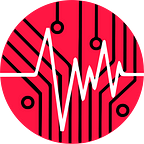This article covers triggering, cycling and basic ventilator modes and settings.
Consider a patient's respiratory rate of, for instance, 20 breaths per minute. One breath consists of an inhalation and exhalation. The ratio of inspiration to expiration is typically 1:2. This means that for 20 breaths per minute (i.e. 60 seconds), one breath cycle takes 60/20 = 3 seconds. Of these 3 seconds 1 second is used for inspiration (inspiratory time), and 2 seconds is used for expiration. These settings are available on your ventilator; we'll get back to that in a minute.
Triggering and cycling
This figure shows you one breath. The start of the inspiration is called the trigger. On your ventilator, you can set what should trigger the ventilator to administer a breath. This can be either time, or changes in flow or pressure. Time triggers are set by setting the patients respiratory rate on the ventilator. If respiratory rate is set at 30/min, every 2 seconds, the ventilator will administer a breath, i.e. start inspiration. So this happens if the patient is completely passive or if the patient breathes too slowly. However, the patient itself can trigger the ventilator as well. This is either flow triggering or pressure triggering. If the patient wants to inhale, a small drop in pressure or a small change in flow direction would trigger the ventilator to administer a breath. Flow triggering is usually a lot more patient friendly, as it requires less effort. In my opinion, pressure triggering should only be used if the trigger is caused by turbulence in the system and the patient would receive an unjustified mechanical breath.
The moment that inspiration is converted to expiration is called cycling. Note that, just like in normal breathing, expiration is completely passive. It's just the moment where a valve is opened to release the air from the patient. So when exactly does this occur? Well this depends on your ventilator mode and settings. Hold that thought. We first need to talk about ventilator modes.
Basic ventilator modes
Terminology can be confusing, but it usually boils down to this: either the patient triggers the ventilator or he doesn't. If the patient does not trigger the ventilator, it's a controlled ventilator mode. If the patient does trigger the machine it's an assisted or supported mode. Note that a patient can trigger the ventilator during a controlled mode, but conceptually, this is the gist.
Controlled ventilation can be subdivided into volume control and pressure control. The main difference is what the clinician sets as a set value and what the resultant is.
In volume control (VC):
- Tidal volume is set by the clinician
- Inspiratory time is set by the clinician
- Cycling occurs when tidal volume has been given
- Pressure is the resultant
- Pressure limits should be set in order to guard safe ventilation
In pressure control (PC):
- Inspiratory pressure is set by the clinician
- Inspiratory time is set by the clinician
- Cycling occurs after said amount of pressure has been applied to the set inspiratory time
- Tidal volume is the resultant
Support ventilation is usually only pressure regulated, as it is regarded a bit more patient friendly when your patient is awake. You know, not having a set tidal volume shoved down your trachea.
Inspiratory time
I've mentioned inspiratory time a few times, as it is an important parameter for inspiratory volume and pressure (depending on the mode). Now how do you set inspiratory time? This depends on your ventilator! Either your ventilator allows for inspiratory time to be set directly in seconds, or your ventilator utilizes the inspiration to expiration ratio (I:E ratio) we've mentioned in the very first paragraph. Please note that the relationship between inspiratory time and I:E ratio is dependent on respiratory rate. If respiratory rate increases, inspiratory time will automatically decrease, as I:E ratio stays the same. Revisit the very first paragraph if you found this confusing, and then answer this question:
A COPD patient is mechanically ventilated at 15 breaths per minute, and you want to increase their expiration time in order to avoid hyperinflation. How do you do this?
- If your ventilator uses inspiratory time: decrease inspiratory time. As the respiratory rate will be constant, this will increase expiratory time.
- If your ventilator uses I:E ratio, change the I:E ratio from 1:2 to (for example) 1:4. Note that this not only increases expiratory time, but also decreases inspiratory time.
What should you consider when changing inspiratory and expiratory times?
During VC:
- Decreasing inspiratory time (a.k.a. increasing expiratory time) results in higher inspiratory pressures as the same volume is given in a shorter amount of time (but more time for expiration, and thus avoiding hyperinflation in specific patients)
- Increasing inspiratory time (a.k.a. decreasing expiratory time) yields lower inspiratory pressures (but could result in hyperinflation or auto-PEEP (we'll get to that in the future))
During PC:
- Decreasing inspiratory time (a.k.a. increasing expiratory time) results in lower tidal volumes and thus lower minute ventilation (but more time for expiration, and thus avoiding hyperinflation in specific patients)
- Increasing inspiratory time (a.k.a. decreasing expiratory time) results in higher tidal volumes and thus higher minute ventilation (but could result in hyperinflation or auto-PEEP (we’ll get to that in the future))
Back to cycling
So can you tell me now what determines the cycling off criteria for different modes of ventilation? :)
